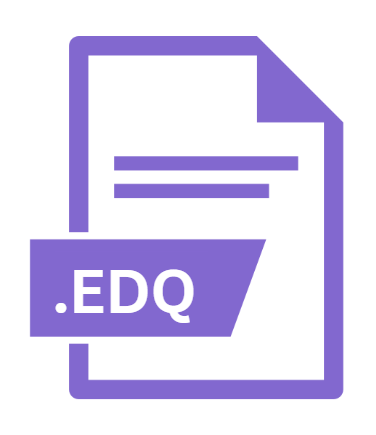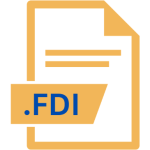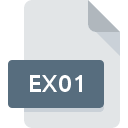.EDQ File Extension

Ensoniq SQ1/SQ2/KS32 Disk Image
| Developer | Ensoniq |
| Popularity | |
| Category | Disk Image Files |
| Format | .EDQ |
| Cross Platform | Update Soon |
What is an EDQ file?
The .EDQ file extension is associated with disk image files used by Ensoniq’s SQ1, SQ2, and KS32 synthesizers.
These files are crucial for musicians and sound designers who work with these classic hardware synthesizers, as they contain data that can be loaded into the devices to recreate specific sound settings, patches, and configurations.
The Ensoniq SQ1 and SQ2 are sequencers, while the KS32 is a synthesizer, all known for their distinctive sound qualities and capabilities in music production.
More Information.
The .EDQ file format emerged during a period when Ensoniq synthesizers were at the height of their popularity.
The format was designed to store and transfer disk images containing sound data, patch configurations, and sequence information.
The primary purpose of these files was to facilitate the easy exchange of sound data between different units of the same model, allowing musicians to share sounds and configurations effortlessly.
Initially, Ensoniq’s hardware synths used proprietary formats for data storage, which posed challenges for users who wanted to transfer data across different devices or back up their work.
The .EDQ file format addressed these challenges by providing a standardized way to manage disk images, thus streamlining the process of data management and sharing.
Origin Of This File.
Ensoniq Corporation, founded in 1982, was a prominent manufacturer of electronic musical instruments and audio equipment.
The company is well-regarded for its innovative synthesizers and sequencers, which played a significant role in shaping the sound of music in the 1980s and 1990s.
The .EDQ file format was developed specifically for use with Ensoniq’s SQ1, SQ2, and KS32 models. These devices were popular among musicians for their powerful sound design capabilities and were used extensively in both studio and live settings.
File Structure Technical Specification.
The .EDQ file format is essentially a disk image file that replicates the structure of a disk used by Ensoniq synthesizers. This format includes:
1. Header Information: Contains metadata about the file, including the version of the firmware it was created with and any specific settings or options.
2. Data Sections: These sections include various types of data:
- Patch Data: Defines the sound patches, including parameters like oscillators, filters, and effects.
- Sequence Data: Stores information about sequences and patterns.
- Configuration Settings: Includes global settings and preferences.
3. Checksum: Ensures data integrity by verifying that the file has not been corrupted or altered.
The file structure is designed to be compatible with the Ensoniq SQ1, SQ2, and KS32, so the data can be directly loaded into these devices without requiring additional conversion or manipulation.
How to Convert the File?
Converting .EDQ files to other formats is not straightforward due to their proprietary nature. There are a few approaches to consider:
- Using Ensoniq Software: The most reliable way to convert .EDQ files is by using the official software provided by Ensoniq or third-party tools designed specifically for Ensoniq devices. This software can read and write .EDQ files, allowing users to manage and convert their data as needed.
- Manual Conversion: For users with technical expertise, it may be possible to extract and manually convert the data from .EDQ files using hex editors and custom scripts. This process involves understanding the file structure and reformatting the data into a more widely compatible format.
- Community Tools: There may be tools developed by the user community for managing and converting .EDQ files. These tools are often shared on forums and websites dedicated to vintage synthesizers and may provide conversion capabilities.
Advantages And Disadvantages.
Advantages:
- Ease of Transfer: .EDQ files make it simple to transfer sound patches and sequences between Ensoniq devices, facilitating collaboration and sharing among musicians.
- Backup and Restore: Users can back up their sounds and configurations, ensuring that valuable data is not lost and can be restored if needed.
- Standardization: The file format provides a standardized way to handle data, which helps in managing and organizing sound settings and sequences.
Disadvantages:
- Limited Compatibility: The .EDQ format is specific to Ensoniq synthesizers and sequencers, limiting its use outside of this ecosystem. Users with different hardware or software may not be able to utilize these files.
- Obsolescence: As Ensoniq’s hardware has become vintage and less common, the relevance of .EDQ files has diminished. Finding compatible devices or software to open these files can be challenging.
- File Size: Disk images can be large, depending on the amount of data stored, which might be a concern for users with limited storage capacity.
How to Open EDQ?
Open In Windows
- Ensoniq Software: Users can utilize Ensoniq’s proprietary software if available. Legacy software might need to be run in compatibility mode or using virtual machines.
Open In Linux
- Emulation or Community Tools: Linux users can try running Ensoniq software through Wine or look for open-source tools developed by the Linux community.
Open In MAC
- Emulation: Running Ensoniq software on macOS may require emulation tools like Wine or virtual machines. Alternatively, users might find community-developed tools compatible with macOS.













